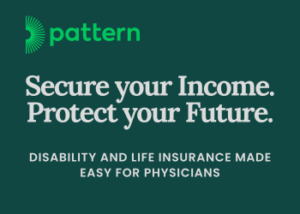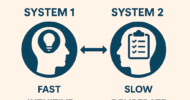Each weekday morning, without fail, I awake to two texts.
One is a symptom checker from my hospital.
The other is a symptom checker from my son’s elementary school.
They serve as a persistent reminder that the pandemic isn’t over, even if we would all like to pretend that it is. In fact, my morning routine is filled with reminders that the pandemic isn’t over: as I pack masks for my children (with at least one spare!) into their bookbags, as I check to make sure that the kids have hand sanitizer, and as I stand outside of the school waving goodbye to my daughter, whose classroom I haven’t seen yet because no adults are allowed on the premises. Every day, my 7-year-old son asks me when he will be eligible to receive the vaccine, and each day, the answer remains the same — not today. In the conversations that my husband, an infectious disease physician, and I have, COVID-19 inevitably inserts itself each time; my husband even talks in his sleep about the management of infected patients. Early one morning, before the first light of dawn, he asked me in a sleep-induced stupor if his patient had eosinophilia.
The pandemic remains very much with us in our daily lives, having insidiously woven its way into the very fabric of our existence. Yet, it feels as though I straddle a great divide — on one side, I face the reality of the ongoing pandemic, and on the other side, work, childcare, social gatherings — in short, life — pretend that everything has gone back to normal.
Normalcy no longer exists.
My 4-year-old cannot remember a time when people didn’t wear masks. I cannot remember a time when my first waking thought wasn’t about the pandemic. I have forgotten what it felt like to shake hands with people or to see them smile. I cannot remember a time when a child’s fever was just that — a fever, and not a sign of having succumbed to the invisible specter that has haunted us for so long. There are no febrile illnesses anymore. There is just the fear that maybe this is COVID, maybe all of our precautions failed, and maybe we have put everyone we love at risk.
I mourn for the life we had before the pandemic, for our innocence, and our ability to enjoy simple things without fear. The time where we had indoor birthday parties, sat for hours in coffee shops reading and drinking a latte, or sampled food in the grocery store seems like a distant dream. These things — very much a normal part of my life previously — seem fraught with risk even now, a year and a half into the pandemic. For me, a return to that lifestyle seems so unattainable — at least until both of my children are vaccinated and we achieve some level of herd immunity in the country.
The silent stress of the pandemic, its constant low-level murmur humming away like some sort of monstrous engine on the fringes of my consciousness, magnifies all other setbacks and stressors that occur in life. Recently, our sitter moved onto another job, and the fragile scaffolding of childcare we had engineered collapsed in the span of one long weekend. When I heard the news, I sat numb and frozen. The old me would have sprung into action and fired off emails and rearranged childcare within a few hours. The new me, living in a constant low-level state of pandemic alertness, ate a pint of ice cream because dealing with yet another setback was just too much. I went to work the next day, where I covered what felt like four different jobs — because of course, the pandemic has impacted the workforce, and health care is no exception to that — and felt angry and resentful that even though I loved my job, I was being asked to do more at work and to choose between my work and my children. The complexities of juggling both work and family felt overwhelming even before the pandemic, but the added layer of the pandemic has made things even more challenging. I can’t just invite a stranger into my home to care for my children without wondering if the stranger is vaccinated and what precautions, if any, they take to mitigate the risk of infection.
The pandemic has worn us all down; my resilience crumbles in the face of the latest statistics from the CDC, warning us that community-level transmission of COVID-19 remains high in the entire country, despite the fact that 75 percent of adults have received one vaccination. It is the classic example of the adage, “too little, too late,” and I cannot curb my resentment when I think about the delay in vaccination uptake.
There was life before COVID, but we are not yet at the point of life after COVID. Maybe we never will be. Maybe we will have to create a life where we live with COVID, and as depressing as that sounds, our future will likely be shaped in some part by co-existence with this virus.
Huma Farid is an obstetrics-gynecology physician.
Image credit: Shutterstock.com




























![Surviving kidney disease and reforming patient care [PODCAST]](https://kevinmd.com/wp-content/uploads/Design-2-190x100.jpg)

![Antimicrobial resistance: a public health crisis that needs your voice [PODCAST]](https://kevinmd.com/wp-content/uploads/Design-1-190x100.jpg)
